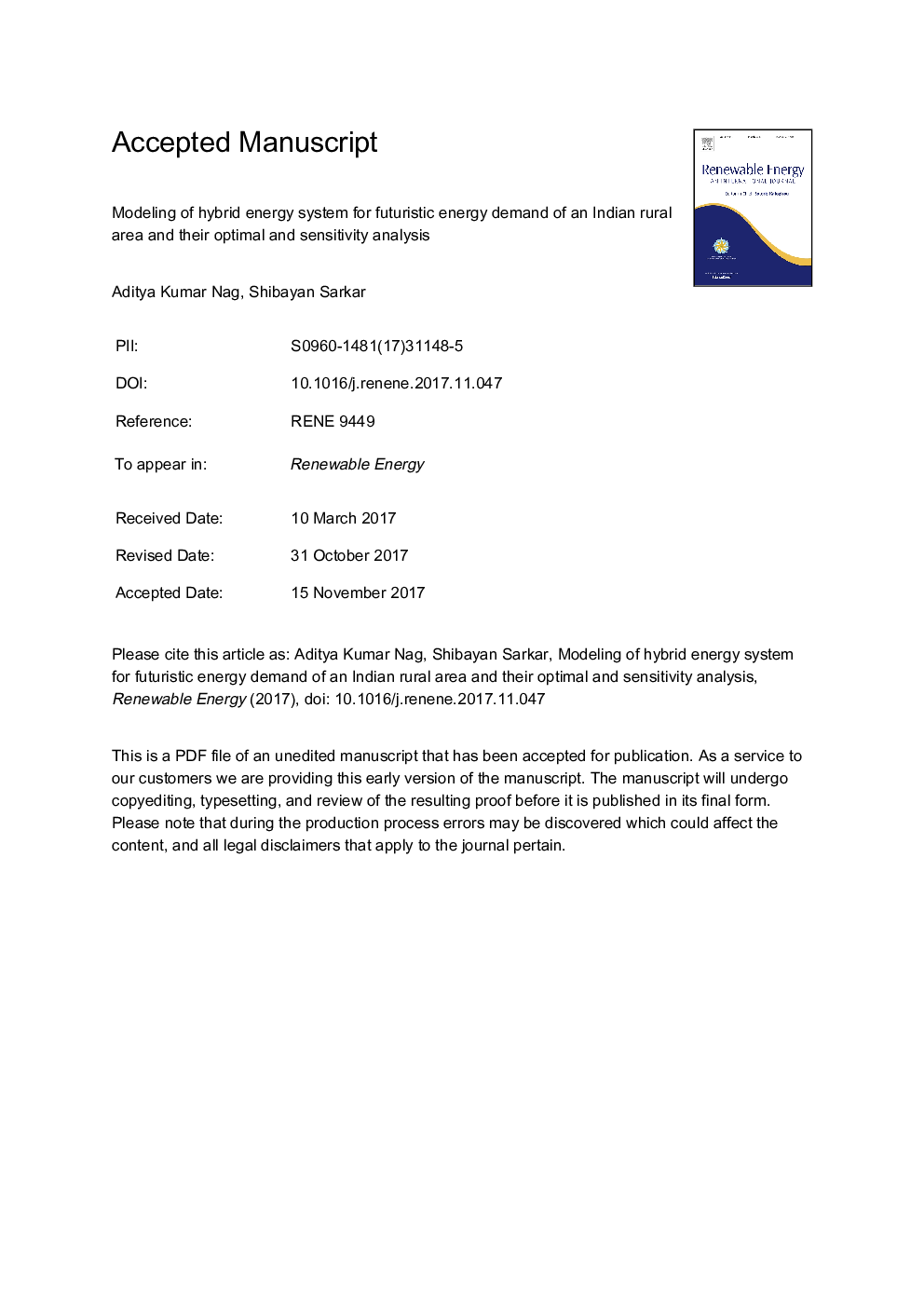| Article ID | Journal | Published Year | Pages | File Type |
|---|---|---|---|---|
| 6765046 | Renewable Energy | 2018 | 31 Pages |
Abstract
The aim of this paper is to model a hybrid energy system for rural India. In this analysis a hybrid renewable system consists of solar-wind-hydrokinetic-bioenergy is proposed. Overall analysis including Optimization and sensitive analysis are evaluated by HOMER software. Optimized results are evaluated considering total net present cost, cost of energy, annual electric generation, renewable fraction and CO2 emission. The analysis is done in order to increase efficiency of the system with comparatively less cost. From this exercise it is found that, combinations of more varieties of different renewable energy system are better to fulfill futuristic demand. Futuristic demand is calculated by logistic growth model. The value of COEs ($) and total generations (kWh/yr) are 0.3563 and 133045; 0.247 and 170948; 0.242 and 179018; 0.241 and 179303 for the year (2012-2021), (2022-2031), (2032-2041) and (2042-2051) respectively. However some other combinations may produce more power, although in such cases, in order to storage excess power COE will increase. As compared to the year (2012-2021) to (2042-2051) the optimized COE of electricity is minimized, keeping Annual cost nearly constant and amount of electric generation is increased without much effect on environment.
Related Topics
Physical Sciences and Engineering
Energy
Renewable Energy, Sustainability and the Environment
Authors
Aditya Kumar Nag, Shibayan Sarkar,
